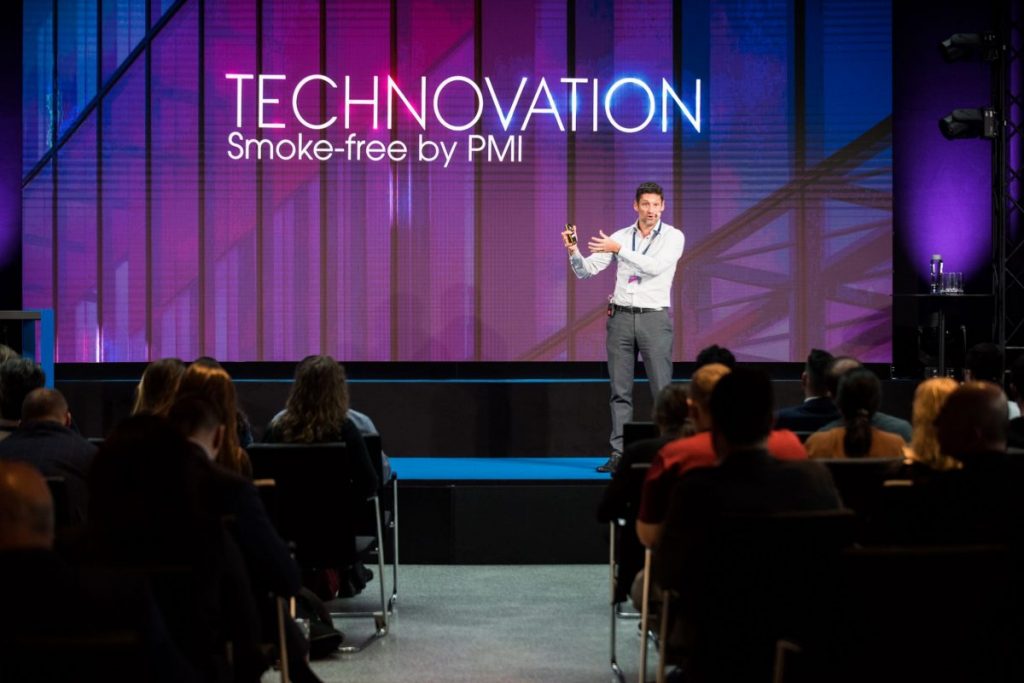Zero-sum game is not possible
Tommaso Di Giovanni, VP of International Communications at Philip Morris International, spoke to us about the benefits of the smoke-free alternatives and IQOS, and the recent FDA authorization that IQOS can be classified as a Modified Risk Tobacco Product (MRTP), clarifying many lesser-known aspects and the future of tobacco industry.

The U.S. Food and Drug Administration (FDA) has authorized the marketing of IQOS, as a modified risk tobacco product (MRTP) in July this year. It means IQOS does not burn tobacco, but rather heats it. What does this turning point mean to you?
The authorisation we received is an important milestone for us. The FDA concluded three main things from the evidence we shared and they gathered, which comprises hundreds of thousands of pages: 1) IQOS system heats tobacco but does not burn it, 2) This significantly reduces the production of harmful and potentially harmful chemicals and 3) Scientific studies have shown that switching completely from conventional cigarettes to the IQOS system significantly reduces exposure to harmful or potentially harmful chemicals. Most importantly, the US FDA allowed us to communicate this information to the US consumers because they believe that commercializing this product with this information is going to benefit and promote public health, and it is likely it is going to produce a measurable and substantial reduction in morbidity and mortality in smokers, which may be proven in subsequent studies. This and the previous PMTA decision gives us access to one of the biggest markets in the world – the US market. Furthermore, it is a clear signal for other governments to consult science and make decisions based on the evidence that technology and science can benefit public health if they regulate and frame the market properly.
It basically means if there is no smoking area, in a restaurant or in a club, you can use IQOS? Even if there is no smoking sign?
That depends on the regulation of the country. And every country has different regulations.
You think it will be amended worldwide, so people can use it indoors. Do you expect that?
The indoor use is a somewhat different question. The FDA and other organizations send a clear message: there is no “zero-risk product”, but for those who continue smoking, there are different (and (clearly better) alternatives to cigarettes. Therefore we encourage them to switch by providing them information about the risks and benefits of our product. To my knowledge, the FDA did not address indoor use in their MRTP decision.
“It is good to offer the smokers a better, smoke-free alternative, if they don’t quit”
Will the regular cigars and cigarettes be completely replaces by Modified Risk Tobacco Products like IQOS in foreseeable future?
That is definitely our vision and ambition. In 2025, we will have approximately the same number of smokers we have today in the world. It is a common sense solution to offer them a better, smoke-free alternative since they will be smoking anyway. We are shifting gears to rapidly replace cigarettes with less harmful alternatives. We started three or four years ago and our heated tobacco product is already commercialized in 57 countries. Now, close to 15 million consumers are using the product. More than 11 million have abandoned cigarettes completely. We’ve already made huge progress. In Japan, approximately a quarter of the smoker population has switched to smoke-free products. A lot of consumers in the UK have switched to e-cigarettes.
But we’re not the only ones in the game. NGOs, scientific communities and physicians all have to be very consistent in their messages. Lawmakers should amend outdated laws. If everyone plays his part, some countries may get rid of cigarettes completely in 10-15 years from now, in less than a generation.

Will this replacement be easy? How can we persuade users to smoke IQOS instead of cigarettes, since there is a habit, tradition, ritual, addiction and they are used to the classic tobacco smoke, regardless of “electric nature” of IQOS – it namely requires charging. It is like changing espresso for cappuccino – the caffeine is the same but the taste is not.
Your question nails the core of the problem. When you burn tobacco, you get a certain smell and taste. When you lit up a cigarette, you have a certain ritual. No matter how you try to mimic this, other products will not be exactly the same. Even the experience of buying the product is not the same. The change is not easy and needs to be supported. However, once they make a switch, after the first 2 or 3 weeks, consumers generally don’t go back to cigarettes. They almost don’t like cigarettes anymore. But they need encouragement in this first period. Commercializing these products is a different ballgame.
Do you think that the government will impose regulations like in the car industry? Some countries like the UK, France, Norway, proposed the phasing of out of carbon-fuelled vehicles by 2025 or 2040. Will cigarettes be completely forbidden?
I don’t think so but establishing a clear goal in public health policy is something that makes sense. That would accelerate positive change. The only country that did something in that direction is the UK, wanting to be smoke-free by 2030, trying to make smokers switch to e-cigarettes if they do not quit altogether. Some other countries did the effort, but not as forcefully yet: Greece, Portugal, New Zealand… Setting clear goals about going smoke-free would send a clear message to customers.
In most countries in the world, there is no clear distinction between cigarettes and other tobacco or nicotine products, they are treated equally (and even banned). Philip Morris is of the opinion that adult smokers, who would otherwise continue to smoke traditional cigarettes, should have enough information about less harmful alternatives. What can PMI do to “enlighten” the users to switch to IQOS?
Defining regulation according to science, as the FDA did, can send a clear message to smokers. Some countries, such as the US, Italy, Portugal or the UK, are already heading in that direction. In the countries that have not differentiated between products, it is harder for a smoker to switch. If you don’t communicate the benefits and risks to consumers, you are basically telling them it is the same thing. And encouraging them to stick with the easier choice: cigarettes, to the detriment of their health and public health.

It is important to make decisions based on scientific evidence because the coronavirus pandemic was also a good example – all eyes are on scientific research in this crisis. When it comes to the tobacco industry, there are generally many manufacturers of electronic and other tobacco products on the market who are unreliable, untested, which is why the US FDA has ordered, among other things, that all manufacturers who want to survive in the market must have consent and scientific evidence, in line with public health promotion. How can PMI make clarifications about IQOS, to persuade people it is a good and much less harmful product?
It is very important that the consumers get precise and accurate information in order not to be confused, like in the pandemics. During the pandemic, for instance, we saw contradictory information being shared on smoking and Covid-19, as evidence was emerging. The FDA decision is very important since it clearly addresses some key questions. This is an approach opposed to the misinformation being spread by some private interest groups led by the ideology of prohibition, and who do not believe in alternatives. They believe the zero-sum game is possible but we all know it is not. People will continue to smoke, as per the same predictions of the WHO. We need to provide them accurate information about the benefits and risks of alternatives.
Vaping was hit by news that using some oils with tobacco is even worse than cigarettes. Many interest groups place their information which is against the e-cigarettes. The public is pretty much confused with it. It is a tough job to derail it to the scientific ground.
A fantastic example. It is a situation in the USA when a lot of news coverage was about e-cigarettes are good or bad. The issue was instead about the oils and vitamin D mixed within the e-liquids. Notice that this cannot happen for instance in the EU, where e-liquids are regulated. The substances that generated deaths in the US were unregulated and should not be used with e-liquids. It is the role of governments to set a framework so that consumers do not make mistakes like putting oils or vitamin E into e-cigarettes. The question is not whether these products are better than cigarettes. That is clear but they need to be regulated and subject to quality standards.